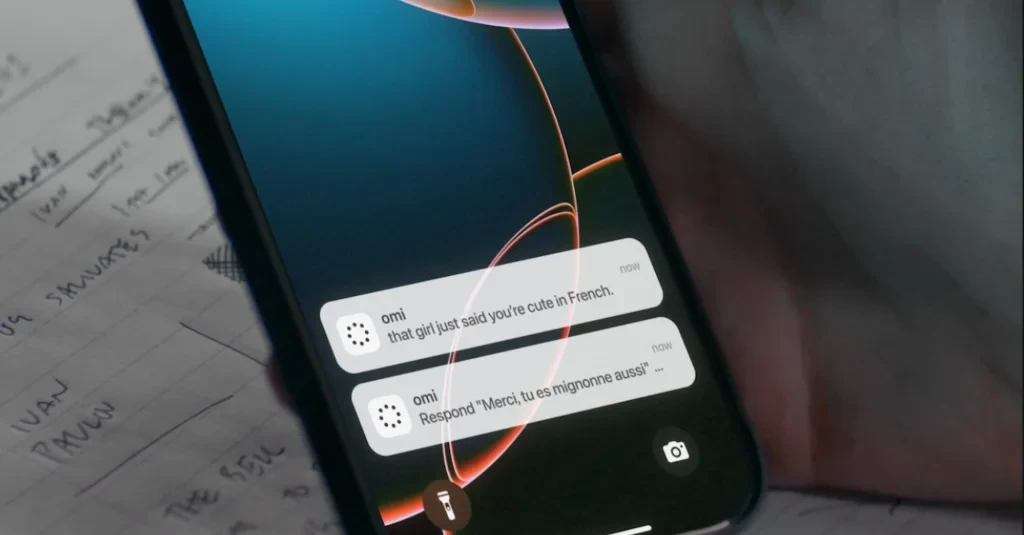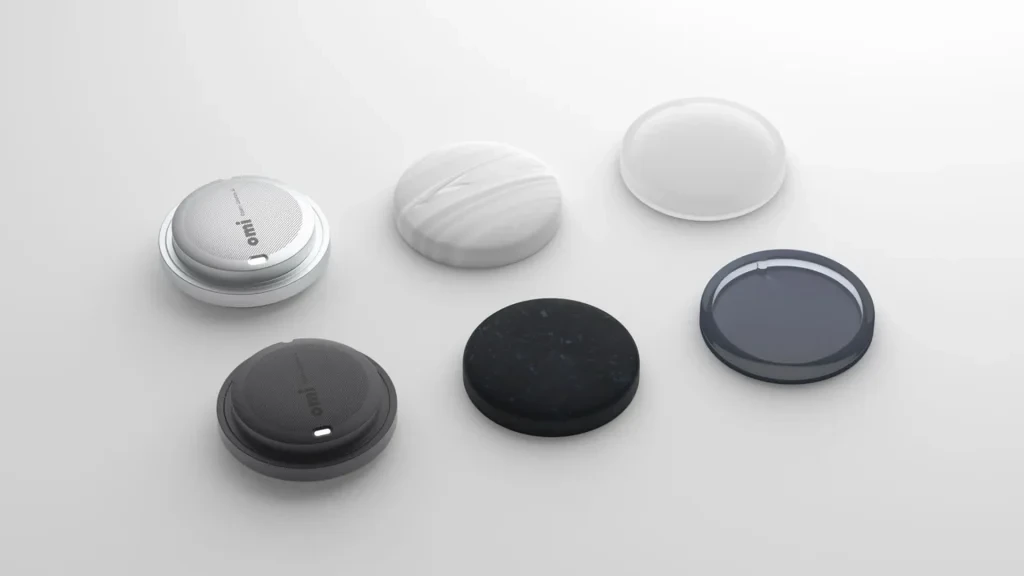Notice the man in front of you. He attaches a white button-like device to his temple, closes his eyes, and silently thinks of a question: What do you think of The Verge as a news media site? Fifteen seconds later, his phone displays a notification filled with information about The Verge’s news credibility.
This isn’t a scene from a sci-fi movie but a real event at the 2025 CES show.

The device is called “Omi,” a wearable AI-integrated device from the startup Based Hardware. It can “read minds,” though it’s still in its early stages. Founder Nik Shevchenko revealed it has an electrode and currently understands only one channel.
Besides The Verge, another media outlet, Tech Crunch, also witnessed Omi reading Shevchenko’s thoughts and pushing information about itself, proving that “mind reading” isn’t a pre-set process.
Shevchenko aims to create a device that understands when users need help and can comprehend and store their thoughts, achieving true “intent recognition” and even “intent prediction,” potentially changing how users interact with smart devices.
However, this goal may take two years or more to achieve. The current version of Omi available to the public is just a smart microphone, primarily worn around the neck like a “necklace.” It continuously records audio and provides helpful information and insights to users. It lasts three days on a single charge and requires a companion mobile app.

Shevchenko claims that the built-in AI assistant in Omi can be activated without a wake word for interaction. During a conversation with The Verge, Shevchenko casually mentioned wanting to know the price of Bitcoin, and within seconds, the Omi phone app pushed the answer.

However, Omi doesn’t always push useful information. During the demonstration, the Omi app sometimes suddenly popped up notifications, which, when opened, turned out to be meaningless audio clips.
In addition to providing information, Omi can record, transcribe, and summarize conversations. It also has an app store that allows Omi to install apps for more functions, such as saving recordings to cloud storage services like Google Drive.

This “continuous listening” approach naturally raises privacy concerns among users. Omi’s response is to be completely open-source, allowing users to check where their data goes on the open-source platform or choose to store it locally.
The open-source platform also allows developers to build Omi applications or modify Omi’s built-in AI model, which helps Omi quickly iterate and update. Shevchenko revealed that there are currently 5,000 early testers helping to improve Omi’s capabilities.
Whether it’s Omi’s appearance, resembling a Go stone, or its always-listening AI feature, both are highly similar to the AI hardware “Friend” released in 2024. In fact, Omi was initially named “Friend.” In 2024, Shevchenko strongly accused Friend of copying his product’s concept and name, but now he states that Omi and Friend are “completely different products,” with the latter being just “one feature” of Omi.

Regarding the birth of this hardware, Shevchenko shared an interesting story: he was born on a deserted island near Japan and has always admired and respected tech industry giants. For many years, Shevchenko has been emailing people like Mark Zuckerberg and Elon Musk, seeking advice and guidance on tech entrepreneurship, but he rarely received responses. Therefore, Shevchenko decided to create a “mentor” for himself, which is now known as Omi.
Interestingly, Omi currently has an app called “Personas.” By inputting anyone’s X tweets, you can create an AI persona of them. Shevchenko mentioned that he has been in contact with an AI version of Musk for a long time, and this “Musk” provides him with guidance and even gives him a “summary” every month.
Beyond the “mind-reading” feature, Omi has bigger ambitions. Shevchenko believes that the current small device is just a part of it, and ultimately, Omi will become a large platform, not limited to specific devices or applications, and will appear on more types of devices.

Over the past two years, various AI hardware has been launched, with many products claiming to replace phones and change interactions, but users found it difficult to even ask for the weather.
Omi also has significant goals, but its approach is more pragmatic. Shevchenko believes that Omi is positioned as an auxiliary device to the phone, aiming to improve efficiency rather than becoming the iPhone of the AI era.
However, Shevchenko also revealed that the company will use $150,000 to promote Omi, and some promotional videos already online seem to exaggerate Omi’s current capabilities, with many users expressing doubts and dissatisfaction in the comments.

At least for now, Omi can be used as a simple AI recording device with potential for further improvement. With support from the open-source community, it might explore more unique uses, making it more reasonable than other AI hardware that is barely usable and requires developers to gradually improve its functions.
The privacy concerns about Omi’s continuous recording and the potential ethical issues behind future “mind-reading” features are also expected to be fully discussed and resolved during the gradual improvement process.
Omi is already available to developers at a price of $70; a consumer version will be released in the second quarter of 2025, priced at $89, making it more cost-effective compared to other AI hardware priced equivalent to a smartphone.
Source from ifanr
Disclaimer: The information set forth above is provided by ifanr.com, independently of Alibaba.com. Alibaba.com makes no representation and warranties as to the quality and reliability of the seller and products. Alibaba.com expressly disclaims any liability for breaches pertaining to the copyright of content.



